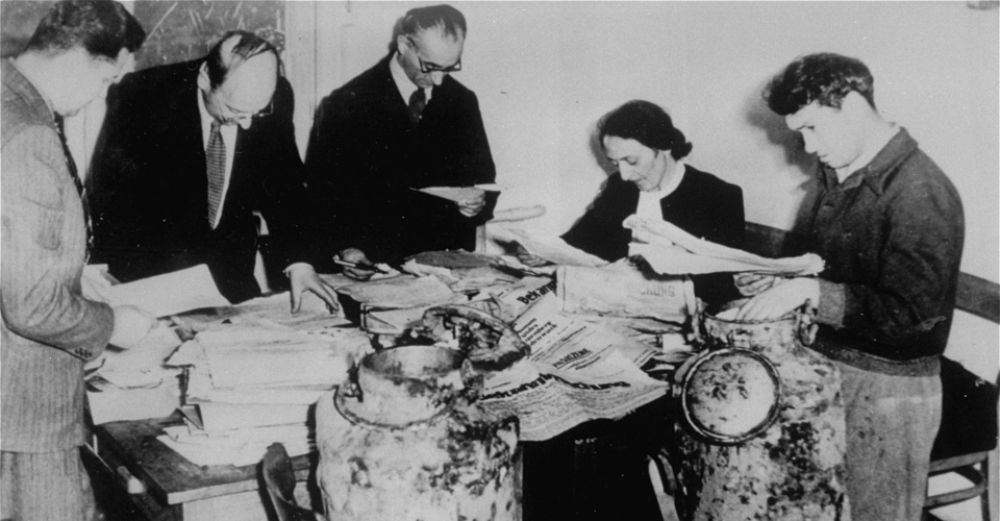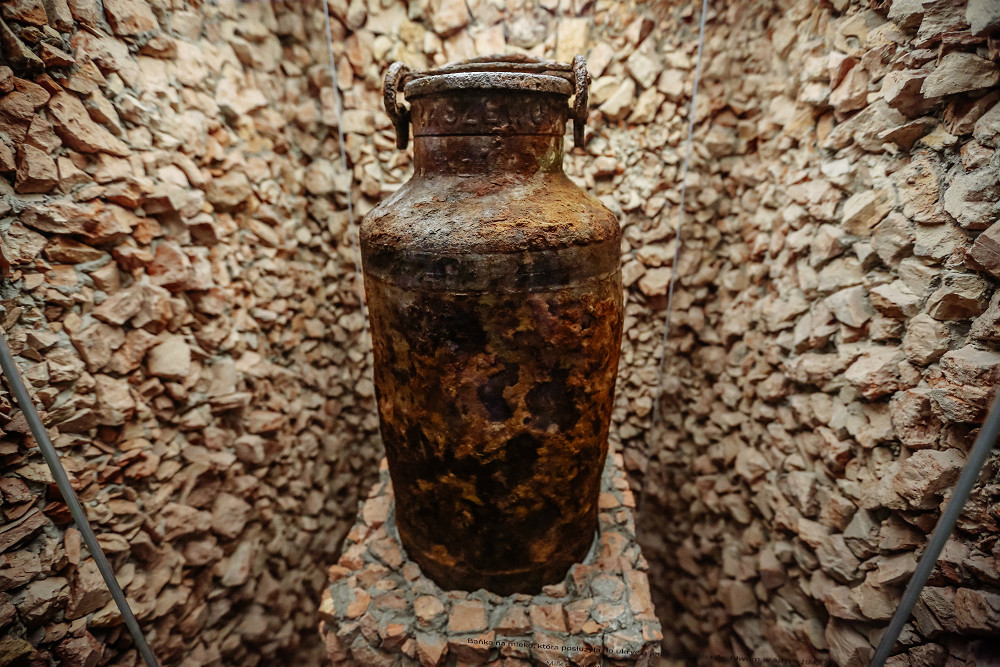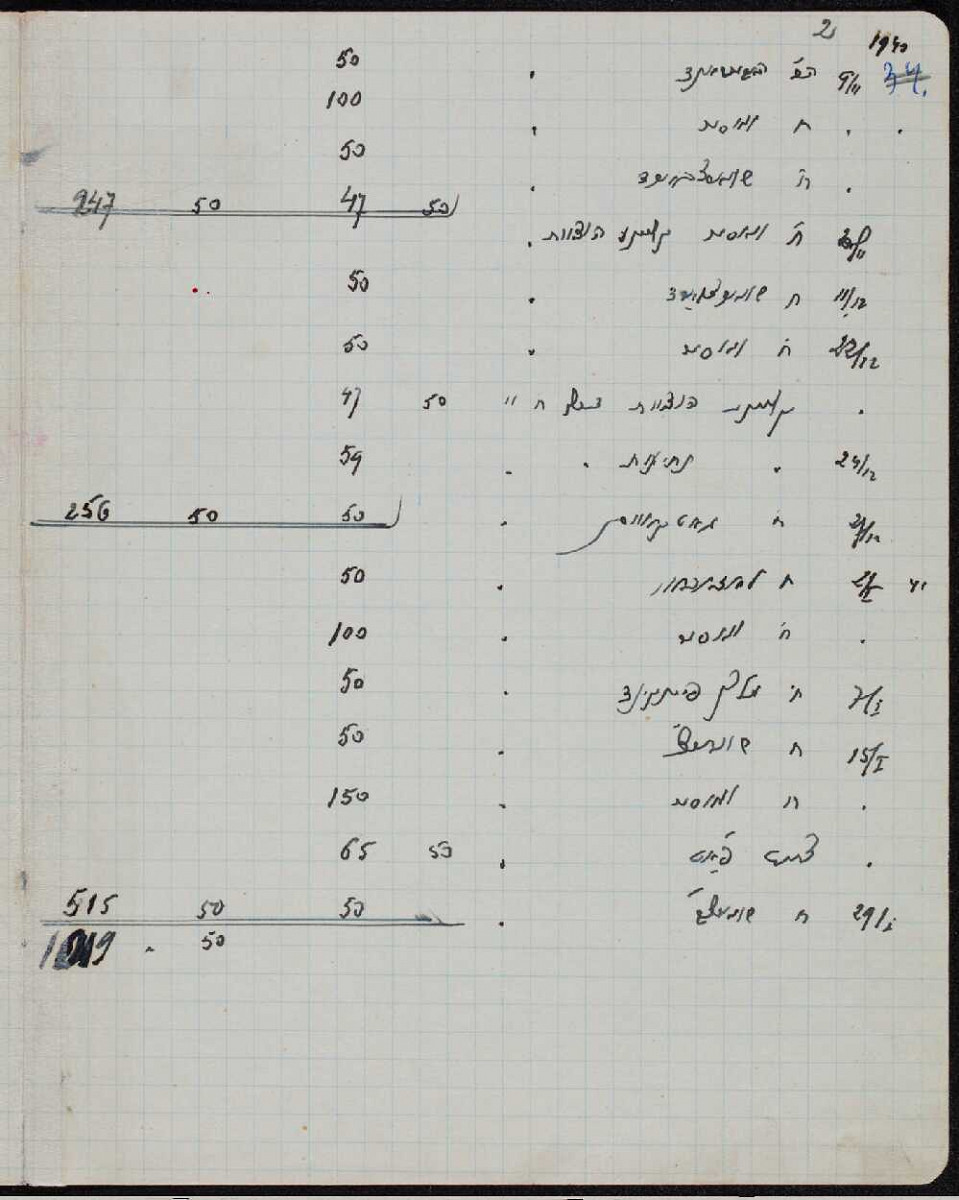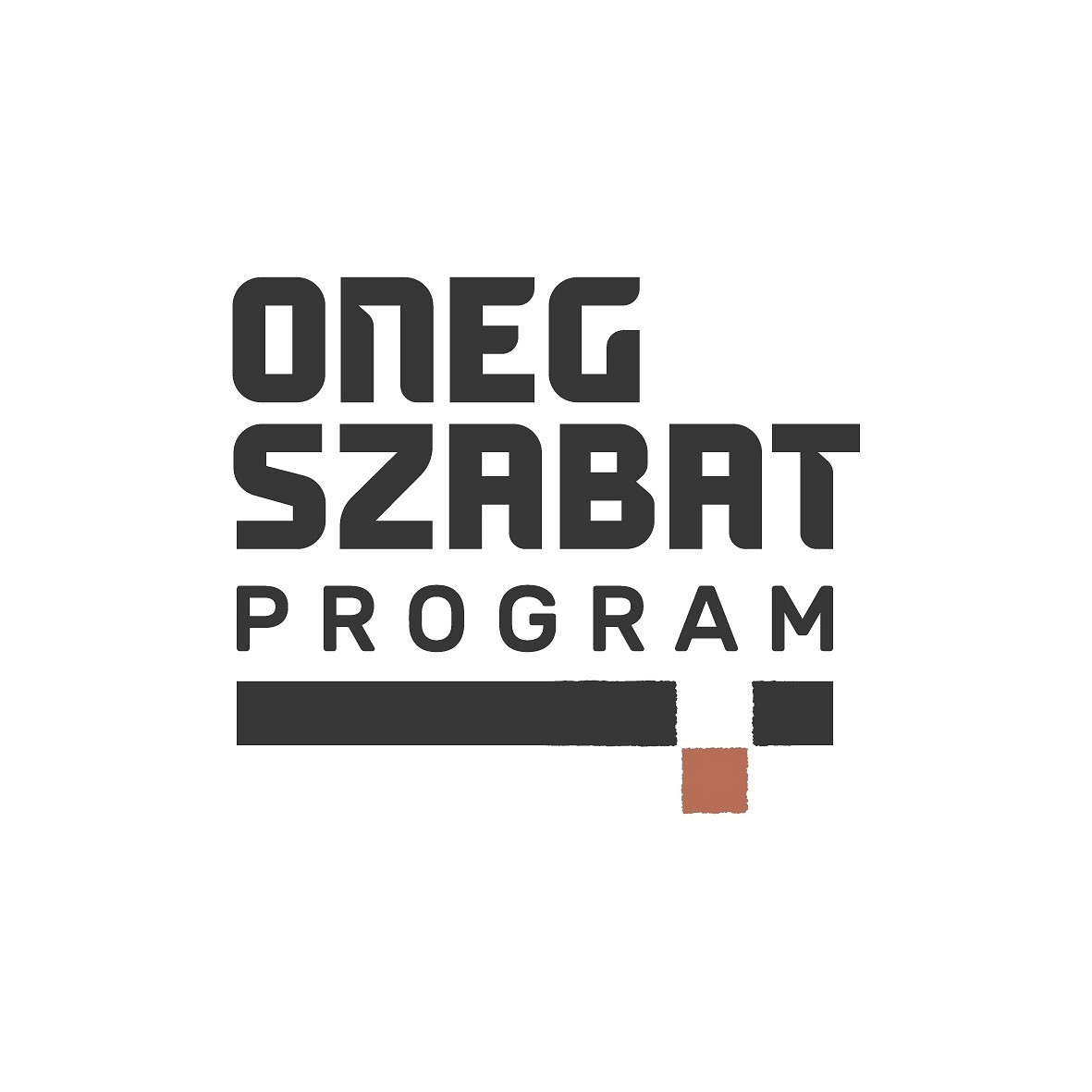- News
- Events
- Oneg Shabbat
- Collections
- Research
- Exhibitions
- Education
- Publishing Department
- Genealogy
- About the Institute
- Bookstore


When ten metal boxes with the first part of the Ringelblum Archive were discovered on 18 September 1946, further search was suspended – yet attempts to get financial support for finding for the remaining documents continued.
On 10 November 1947, the Jewish Historical Institute issued a request to the Central Committee of Jews in Poland, explaining that every week of delay has negative impact on the condition of these papers. Given that the materials excavated last year were in danger of being destroyed and some of them are in condition which unables using them (ink dried, paper is crumbling, etc.) we should worry that the part of the Archive which hasn’t been excavated yet won’t survive another winter and will be totally destroyed. During the meeting of the Board of the CCJP in 4 December 1947, a sum of 5 million zloty was included in the budget plans, for the purpose of „excavating various archives” and preparing photocopies of discovered documents from the Ringelblum Archive. In the same month, a tender was opened for search of the Archive. Three companies participated – eventually, the task was assigned to engineer Marian Pliszczyński. [1]
Ultimately, works in the area of the former brushmakers’ shop at 34 Świętojerska street had begun in 1949, thanks to a million zloty donated by the (American Jewish Joint Distribution Committee). For a couple of months, Jan Michalak’s company was decluttering the parcel on Świętojerska St. digging as low as to its basement, but, unfortunately, to no avail. A note regarding the works appeared in the first issue of the “JHI Bulletin” in March 1950: As we know, in 1946, a part of the secret ghetto archive, know as Dr Ringelblum’s Archive, was discovered in the ruins of the Warsaw Ghetto. The remaining parts of the Archive should remain hidden at 39 Świętojerska street, 4–5 metres deep into the ground. Thanks to the support from CCJP, last Autumn a search begun in places in which, according to the information passed by living witnesses, hidden archives shoule be found. So far, 12 basements have been searched, but with no results. A large amount of explosives was found, along with German bayonets. [2]
The JHI was at the time excavating on 59 Nowolipie St., less that 400 meters from the site of discovering of the 1st part of the Archive. In June 1949, a state-owned construction company building houses for workers found a bunker there, which was used during the Ghetto Uprising. No one knows why the further excavation works on 68 Nowolipki St. were put on hold. It is possible it was thought that the rest of the Archive was located on Świętojerska, or it was believed that given that in 1946 only metal cases were found here, no new findings can be made on this location.
Meanwhile, the construction works on the Muranów C estate continued at Nowolipki street. In late Autumn, diggers and bulldozers of the State Workers’ Estates Construction Enterprise were preparing the area for a new building. On 1 December 1950, they came across milk cans with the second part of the Ringelblum Archive.

It turned out that both parts of the Archive had been hidden in the basements of the same building at 68 Nowolipki street, where the Ber Borochov school continued to function in the Ghetto until July 1942. It remains unknown why it wasn’t unearthed together with the first part.

However, on December 1st 1950 milk cans containing the 2nd part of the Ringelblum Archive were found. We know from the documents that the person who immediately knew the importance of the discovery was Władysław Wójcik, who alerted the manager Władysław Gabiński, and later — the Jewish Historical Institute. The manager called the security team which guarded the Archive until the board of directors of the JHI came. The documents from the 2nd part of the Underground Archive of the Warsaw Ghetto were preserved in much better condition than those excavated four years earlier in metal boxes, because the milk cans were airtight. They comprise altogether more than 8,000 pages, among others the registration materials of the Oneg Shabbat group (e.g. financial records), literary works, papers of Emanuel Ringelbluma, Hersz Wasser, Rachela Auerbach, Eliasz Gutkowski, Szymon Huberband and Perec Opoczyński. According to Wójcik, on 15 January 1951 the milk tins were damaged by the diggers and the papers were scattered by wind, but the containers themselves didn’t carry marks of serious damage, they were also soldered. [3]
Eight days later in the article „In soldered milk cans, the Ghetto Archive survived”, the „Życie Warszawy” newspaper reported on the finding, stressing it uniqueness and importance. It said: The Jewish Historical Institute sent special group of scientific workers who will work on ordering, filing and cataloguing of the saved Archive and making it available for researchers as soon as possible.

In fact this work still continues — On 18 September 2017, on the 71th anniversary of discovering the first part of the Archive, the Jewish Historical Institute and the Association of the Jewish Historical Institute of Poland have announced the international Oneg Szabat Program, aimed at popularizing knowledge about the Underground Archive of the Warsaw Ghetto and commemorating the members of the Oneg Shabbat group.
The most important task of the Program is to make the documents of the Underground Archive of the Warsaw Ghetto available to people worldwide. They were digitalized and published in their entirety at the Central Jewish Library website and on the Delet portal.
Last year, the works on translating the documents and their editions to English have begun. This great enterprise is going to span many years. The launch was possible thanks to support from our Donators: Rothschild Foundation, Rozen Family Foundation and Taube Philanthropies. The first volume, Warsaw Ghetto. Everyday Life, edited by Dr Katarzyna Person, has already been published. This Autumn, we intend to publish the second volume, Accounts from the Eastern Borderlands, edited by Prof. Andrzej Żbikowski.
In November 2017, in the building where Emanuel Ringelblum worked and where the Underground Archive of the Warsaw Ghetto was being developed, the Jewish Historical Institute and the Association of the Jewish Historical Institute of Poland have opened the permanent exhibition – What we were unable to shout out to the world, which presents original documents from the Archive. In the first six months, the exhibition has been visited by over 15,000 guests. The exhibition is complemented by an educational project aimed at Polish and international school and university students. The workshops have been already attended by more than 250 students and teachers.
We are also planning to organize a series of travelling exhibitions, which will tell the story of the Ringelblum Archive and the Oneg Shabbat group in the most renowned museums in the world, in cooperation with their curators.
In early 2018, we have launched a communications campaign aimed at students from Poland, the US, Canada and Australia. In March 2018, we have ran a pilot edition of the Oneg Shabbat Ambassadors program with a group of students from the University of Pensylvania Hillel. We have prepared workshops and meetings with the Ringelbum Archive researchers. The next edition is planned for March 2019.
At the onegszabat.org page, we are publishing the most important information about the creators of the Archive – their life and death, their choices, challenges and the community they created.
At the Oneg Szabat profile on Facebook, we recall the most important dates and events related to the creators of the Ringelblum Archive and the times in which it was created. We also publish regularly information about all the projects developed within the Program.
The Program is being joined by increasingly more people worldwide. Regardless of age, education, religion or residence, they find importance and resonance in the words of Dawid Graber, written in his testament just before the Archive was buried: It is enough for me that the future generations will remember about our times (…) May this treasure end up in good hands, may it live to see better times, may it alert the world about things that happened in the 20th century.
-----------------------------
An article of Eleonora Bergman entitled Discovering second part of Archive, 1.12.2017 and Agnieszka Haska entitled 66th anniversary of discovering of the second part of the Archive, 1.12.2016, were used in the publication.
Footnotes:
[1] Aleksandra Bańkowska, Agnieszka Haska,...w podziemiach wymienionych domów zakopane są... Poszukiwania Archiwum Ringelbluma, Zagłada Żydów. Studia i materiały, nr 12/2006, s.328.
[2] Poszukiwanie dalszych części archiwum getta warszawskiego, Biuletyn ŻIH 1950, nr 1.
[3] Aleksandra Bańkowska, Agnieszka Haska,...w podziemiach wymienionych domów zakopane są... Poszukiwania Archiwum Ringelbluma, s. 329.